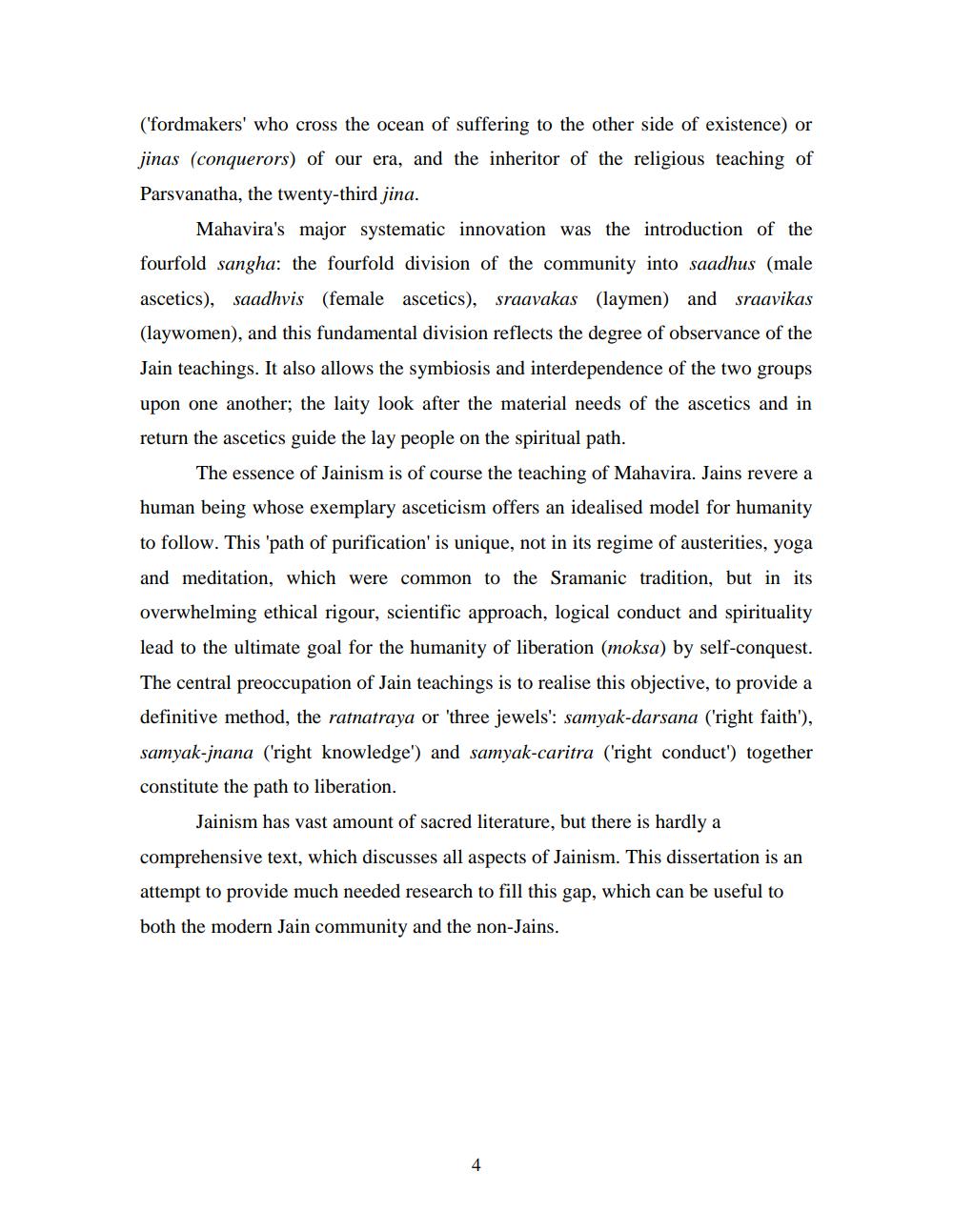Book Title: World of Conquerors Author(s): Natubhai Shah Publisher: Natubhai Shah View full book textPage 4
________________ ('fordmakers' who cross the ocean of suffering to the other side of existence) or jinas (conquerors) of our era, and the inheritor of the religious teaching of Parsvanatha, the twenty-third jina. Mahavira's major systematic innovation was the introduction of the fourfold sangha: the fourfold division of the community into saadhus (male ascetics), saadhvis (female ascetics), sraavakas (laymen) and sraavikas (laywomen), and this fundamental division reflects the degree of observance of the Jain teachings. It also allows the symbiosis and interdependence of the two groups upon one another; the laity look after the material needs of the ascetics and in return the ascetics guide the lay people on the spiritual path. The essence of Jainism is of course the teaching of Mahavira. Jains revere a human being whose exemplary asceticism offers an idealised model for humanity to follow. This 'path of purification' is unique, not in its regime of austerities, yoga and meditation, which were common to the Sramanic tradition, but in its overwhelming ethical rigour, scientific approach, logical conduct and spirituality lead to the ultimate goal for the humanity of liberation (moksa) by self-conquest. The central preoccupation of Jain teachings is to realise this objective, to provide a definitive method, the ratnatraya or 'three jewels': samyak-darsana ('right faith'), samyak-jnana ('right knowledge') and samyak-caritra (right conduct') together constitute the path to liberation. Jainism has vast amount of sacred literature, but there is hardly a comprehensive text, which discusses all aspects of Jainism. This dissertation is an attempt to provide much needed research to fill this gap, which can be useful to both the modern Jain community and the non-Jains.Page Navigation
1 2 3 4 5 6 7 8 9 10 11 12 13 14 15 16 17 18 19 20 21 22 23 24 25 26 27 28 29 30 31 32 33 34 35 36 37 38 39 40 41 42 ... 427
